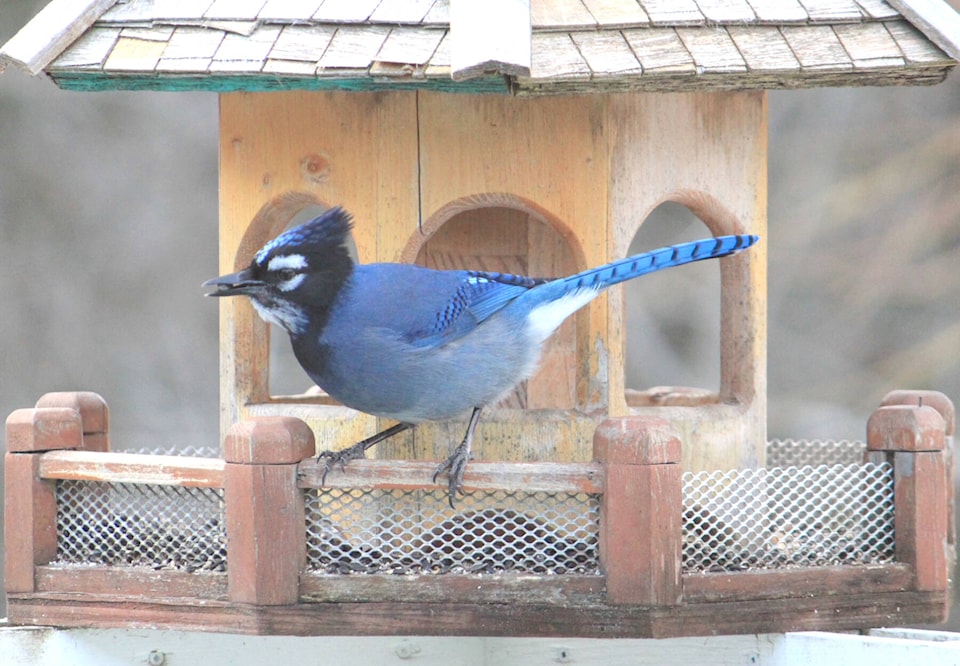By Ed McMackin
It is not too often that a bird shows up that is so distinctly two birds put together in one.
It happened in early December (2010) at a bird feeder near Boswell, B.C. It seemed to be a definite cross or hybrid of a Steller’s Jay (Cyanotcitta stelleri), B.C.’s provincial bird, and a Blue Jay (Cyanocitta crestata), more common east of the Rocky Mountains. These are two distinct species, at least according to taxonomists.
What would you think if a Steller’s Jay with a white face, white breast and white tail under-parts showed up at your feeder? I had never heard of the like much less seen one.
A hybrid does not produce viable offspring. That is part of the definition of a species. This Steller’s Jay/Blue Jay appeared to be, in shape, much like a normal bird, but it did seem intimidated by the Steller’s Jays around it. Usually this bird’s crest was down when Steller’s Jays were around, but the crest was up when the bird was in the feeder by itself.
Getting back to this jay hybrid, what Steller’s Jay wouldn’t be nervous with this other white-faced jay around? Their kind have a small white patch over the eye, which seems to have some significance to status. The Steller’s Jay might find the white-faced jay more intimidating than a small white patch over the eye of a Steller’s Jay.
When I looked at this hybrid I thought I was seeing something that smacked of being exotic. Many birds in the tropics seem to be pieced together from one or two other species. Reports have come to me of robins with white tails, wings and/or with white patches on the body. These variant “colors” may be environmentally triggered. Bird-tails with a few white feathers are characteristic of several bird species – Juncos, towhees, savanna sparrows and others. This feature often results in a predator grabbing the tail and the bird gets away missing only a few tail-feathers.
Steller’s Jays in Canada, have historically been inhabitants of coniferous, forested ares of B.C. and western Alberta, while Blue Jays were found in the deciduous and mixed forest areas from Manitoba to the Maritime Provinces. Once prairie towns were landscaped with trees and shrubs, blue jays, a species depending on trees for nesting, spread westward to southeastern B.C. A simlar pattern of redistribution occurred in the United States. Another route of movement was over the northern woodlands to central B.C. and south.
A jay of this appearance is so rare that your chances of seeing one are very slim. If this was a nameless species what would you call it? (Perhaps Ottawa will recognize the West now).
(Extracted in part from “Out There”: February 10, 2011. Creston Valley Advance)
